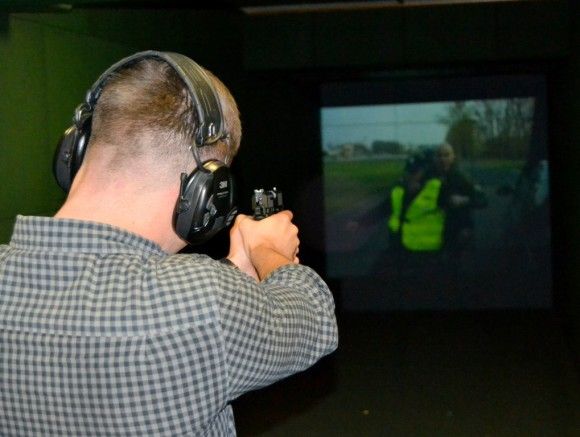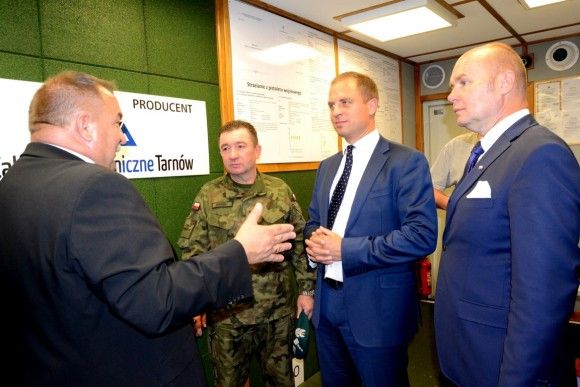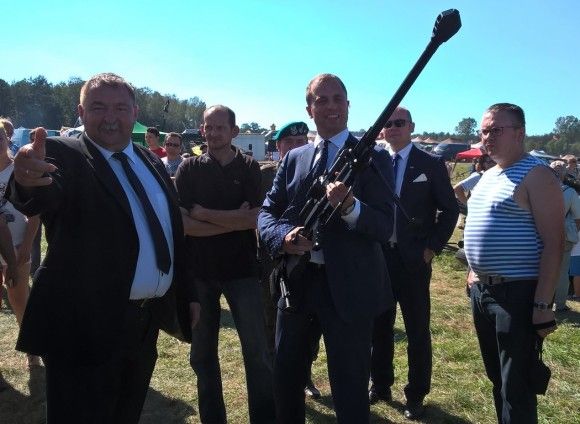Wisła and Narew: Missiles For The Army, Technologies For The Industry
Not only do the Wisła and Narew programmes constitute a procurement of the ready-made medium and short range anti-aircraft and anti-missile systems, they are also an opportunity for the Polish armament industry to acquire a set of new technologies. When it comes to the Polish radar industry, this means that initiating a production of active-antenna radars with a wide variety of bandwidths would be possible.
When, on 21st April this year, the decision was made to start negotiations regarding the acquisition of the Patriot system from the American Rayethon company, information was released, according to which the system is going to be delivered with a new radar. This radar is to be using fixed active antennas with gallium-nitride based transmit-receiving modules.
This piece of information is particularly relevant in the light of the fact that the Rayethon’s competition in the tender offered a technology transfer for the Polish industry, which would cover the transfer of knowledge needed for production of this type of antennas, including the above-mentioned modules. The manufactured radars are thus compliant with the idea of a software-radar, meaning that the radar is fully programmable, and that it is capable of changing its parameters and functions, solely using proper computer software. Such radar is often referred to as a multifunction radar, meaning that not only is it capable of searching and classifying the targets, but also that it can track the targets during the search process, with a variable time of acquiring the information. Should this type of technology be provided to Poland, our country could become the main supplier of the latest state-of-the-art radars in Europe, and one of the most important suppliers of radar technology globally. Thus, everything should be done in order to negotiate the same deal with the Rayethon company. The technology above would be revolutionary for the Polish industry.
Wisła and Narew – Not A Single Radar
The anti-aircraft missile batteries may operate independently, using their own autonomous fire-control radars. However, in standard conditions they should become a part of the early detection system, where all information related to the identified object comes from the early warning system, and is transmitted to the fire-control radars and to the commanding posts of the anti-aircraft systems.
Using the early warning systems is particularly relevant due to the following issues:
- signal parameters of the fire-control radars are commonly known, the enemy, when such signal is detected, knows immediately that he approaches an area which is protected by the anti-aircraft systems. There is some time for him to get prepared for utilization of defensive countermeasures or for carrying out an offensive action;
- the fire-control radars have a relatively small range, thus even if they are able to detect the intruder, no time for reaction would be available for the batteries;
- the battery has a limited scope of capability, when it comes to the global awareness of the airspace situation. In case of such awareness, all of the observed targets should be identified and classified within the scope of the level of threat.
Thus, the anti-aircraft systems are usually connected with a target detection system which is based on a variety of radars, operating within a wide range of bandwidths, in a variety of ways. The Americans did test application of the PAC-3MSE missiles in the Patriot system with the use of a radar hung under a helium balloon (such layout was proposed in the Rayethon-developed JLENS system).
All of the companies offering the missile systems for the Polish Armed Forces, within the scope of the Wisła programme, and particularly the administrator, did appreciate (at least officially) the Polish radar industry successes, regarding the early warning radars. They all proposed that these systems should be used in the process of creating the future Polish air defence network. The following systems were considered to be particularly useful:
- P-18PL Early Warning Radar
- PCL-PET Passive Radar Detection System
P18PL Early Warning Radar
P18-PL radar is being developed within the scope of the new research and development project, named “Opracowanie prototypu radaru P-18PL wstępnego wskazywania celów pracującego w paśmie metrowym, ze skanowaniem fazowym w dwóch płaszczyznach dla Zestawów rakietowych Obrony Przeciwlotniczej (ZROP)” [Development of a prototype for the P-18PL Radar for early target indication, operating within the meter band in two planes for the air defence missile systems].
The research project above made it possible to create a design of a multi-functional long range VHF (meter band) radar. This radar station may be used both as a source of data for the airspace monitoring systems, as well as as an observation radar for initial target detection for the anti-aircraft missile systems.
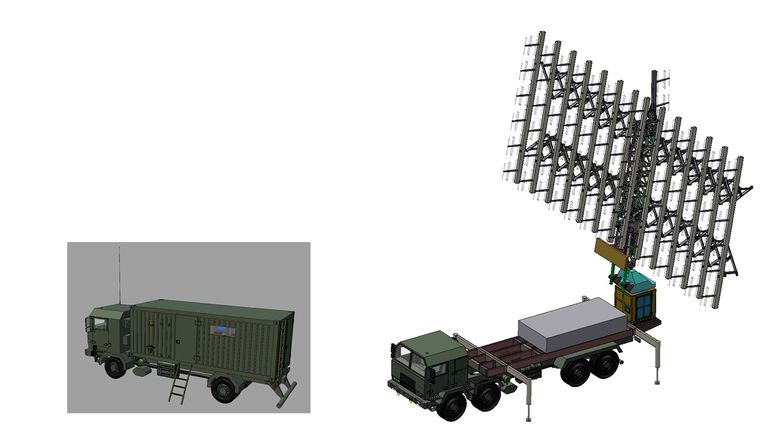
Using the VHF band increases the range of the radar, since the VHF waves are are much less attenuated by the atmosphere than the microwaves. Secondly, utilization of anti-radiation missiles is harder to be realized, since no anti-radiation missiles operating within the VHF band exist. What is more, thanks to utilization of the VHF band, such radar would be perfectly suitable to detect airborne objects that have been developed with the use of the stealth technology. Here so called resonance-based radar technique is utilized – when the wavelength of the probing signal is comparable with the size of the object to be detected a phenomenon of resonance is present. Moreover, the RAM (Radar Absorbing Materials) materials utilized in case of the stealth objects are not currently designed to be effective within the VHF band.
Option of detecting and tracking the ballistic missiles and passive operation capabilities can be considered to be additional advantages of this radar system. Here it is indicated that radar signal of other radars contained within the P18-PL or the older P-18 stations may be used.
The newly designed radar system is to consist of two vehicles – the antenna vehicle (with a hydraulically raised antenna) and indicating vehicle (with the operator station and data transmission and communication systems) with a trailer, featuring a field power generator, attached to the antenna vehicle.
In comparison with the P-18 radar, P-18PL station is a 3D radar – it makes it possible to determine distance, direction and altitude of the tracked object. This capability was achieved thanks to the fact that the radar utilizes an active AESA antenna with an electronically controlled radar beam, within the horizontal and vertical planes.
The antenna system consists of a two-dimensional transmit-receiving modules operating within the VHF band. Each of the modules is powered and programmed separately, this makes it possible to digitally synthesize and receive the radar signals. Secondly, such arrangement enables the system to digitally form the receiving and transmitting profiles (since no initial analogue demodulation is present).
Additionally, the antenna features an IFF (Identification Friend or Foe) antenna module. The long-range IDZ-50 IFF interrogator coupled with the antenna has also been developed by the PIT-RADWAR S.A. company (within the scope of the “Kwisa” programme).
PCL-PET Passive Radar System
PCL-PET is a multi-static passive radar system (Passive Location System), the task of which is to deliver radar information for the airspace monitoring systems, along with initial detection and indication of the targets for the medium- and short range air defence systems. Additionally the PCL-PET system is stealthy – since it does not emit its own radiation. Secondly, this system is capable of monitoring the airspace, should a need to switch off the active radars arise.
PCL-PET system uses two methods to detect, locate and track the airborne targets:
- PCL – Passive Coherent Location – using the electromagnetic radiation of the local emitters;
- PET – Passive Emitter Tracking – detecting the electromagnetic radiation generated by the on-board equipment of the detected objects (airborne, ground and maritime).
Thus one system interconnects two, differentiated passive systems.
In case of the PCL system, signals emitted by so called occasional emitters are used. They are – in no way – related to the PCL-PET station, they are sent in order to realize a different, usually non-combat, task. These emitters include, above all: analogue FM band radios, DVB-T digital television and the GSM mobile phone networks.
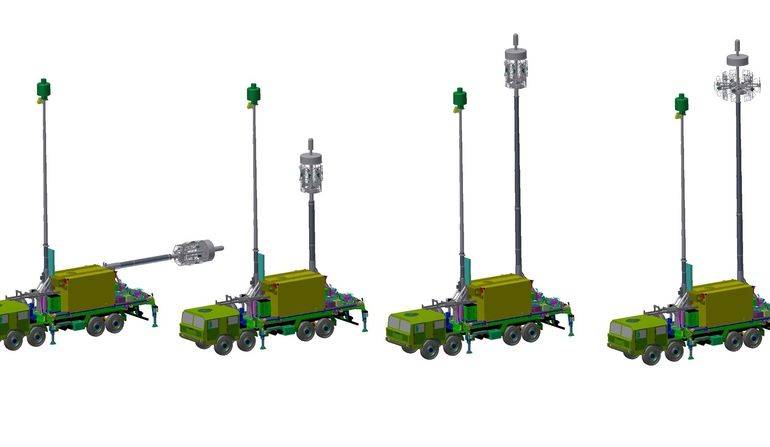
When it comes to the PET system, four sub-systems have been applied: PET-ELINT (for detection and analysis of the signals emitted by the onboard radars), PET-NAV (for detection and analysis of the signals emitted by the navigation systems), PET-IFF (using the transponders and IFF interrogator signals coming from the aircraft and from the land and maritime platforms), and finally, PET-COMINT (for detection and analysis of the communications systems signals).
In case of the PET system, some solutions developed for the previously pursued Polish Gunica programme have been applied, however, most of the components of the system are completely new (including ELINT, COMINT and IFF).
Each of the above-mentioned sub-systems of the PCL and PET systems uses antenna systems that are embedded within two, mechanically extended masts. In case of the PCL system, an antenna receiving system featuring two double-polarised phased arrays was used – thanks to which it is possible, contrary to the single-polarised antennas, to use the signals coming from a wider variety of the occasional emitters.
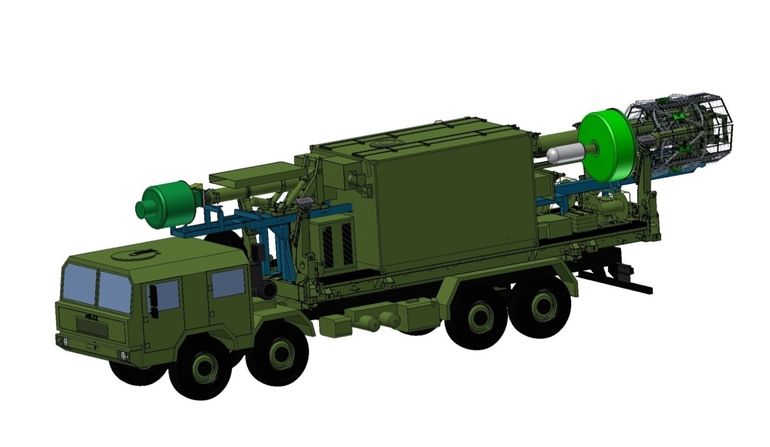
Taking the above into consideration, one should remember that in order to locate the objects with the use of the PET sub-system, TDoA Method is used, thus cooperation of four identical PET detection stations is required, where only one of these stations is functioning as the main one, and the remaining ones are working as slaves. Solely in such case is it possible to measure the time differential between the event of signal reception, and determine – three-dimensionally – the location of the signal sources.
Utilizing the PCL system makes it possible to detect and track the detected airborne targets, also in situation when they maintain radio silence (in case when the PET system does not receive any signal).
However, the most innovative solution has been applied within the scope of coupling the PET and the PCL system – especially when it comes to exchange of the information between the two. Here, so called fusion of Cartesian tracks or fusion of bi-static plots (elementary detections) is utilized. Tracking the target with the use of the Cartesian coordinates requires several elementary detections to happen in three “emitter-receiver” pairs in the PCL system. Simultaneously the signal emitted by the tracked object needs to be detected by all four of the PET radar stations. Fusion of data requires the coordinate of the three measurements to be obtained, in any PCL or PET combination.
Thanks to this multi-static solution the PCL-PET system would be capable of detecting and tracking the objectss that utilize the stealth technology. The system would also be capable of classifying the treats, since the PET component possesses all of the possibilities offered by a reconnaissance systems. This means that measurement of the parameters of the received signals is going to be realized in the real time. These parameters are going to be compared with the database created earlier on. Archiving the results of reconnaissance and recording the indicated measurement data sets would also be possible, in order to carry out a proper analysis later on.
Each of the PCL-PET radar stations is going to be set on a single wheeled vehicle (4 axles). Each of the vehicles is going to feature two folding antennas and a single operational cabin in the container.
Polish fire-control radars?
Using the P-18PL radar, along with the PCL-PET station does not mean that the Patriot system would not be able to use the data provided by other Polish-made radars. Poland may, independently, once the proper parameters of the missiles are defined, develop radars that may act within the scope of the missile guidance process (experience gathered during the process of creating the LIWIEC multi-functional radar would become a significant advantage here). Thus quantity of the systems that would have to be procured abroad is reduced. Works within that scope are already in progress, and the funds provided by the National Research and Development Centre (Narodowe Centrum Badań i Rozwoju) have been allocated to, besides the above-mentioned systems, develop the initial target detection and indication radars (P18PL, PCP-PET), and also to develop two multifunctional fire control radars, known as WISŁA and NAREW.
The development of the WISŁA and NAREW fire control radars assumes that active phased-array AESA antennas are going to be utilized. These antennas consist of thousands of transmit-receiving modules, each of which is equipped with a receiver, an emitter, an amplifier and a phase shifter. Each of these modules is powered independently, they also feature independent control systems, thanks to which it is possible to customize the operational parameters of the receivers and the transmitters.
Modern anti-aircraft armament is operated according to the “fire-and-forget” principle, there is no need to track the target after the missile is launched. For example, the Lockheed Martin PAC-3MSE missile utilized in the Patriot and MEADS systems features an active radar, which, once the missile reaches the target with the use of its inertial navigation system, is able to detect and destroy the target without any external input.
The fire-control multi-functional radar is thus only used to indicate the target position (including its altitude), its speed and bearing, and to potentially correct the missile direction, should the target change its bearing. Not only may Poland, by acquiring the net-centric missile system, have an option of guiding the missiles with the use of foreign fire-control radars, a possibility of using the Polish radars could also be achievable. The only condition here is that the Polish radar should be accurate enough.
In case of the WISŁA fire control radar, the concept is to create an AESA X-band radar, with a range of 300 km. It was assumed that the missile guidance process is to be realized by the missile radar independently, thus 10 000 modules are to be used in the phased-array antenna.
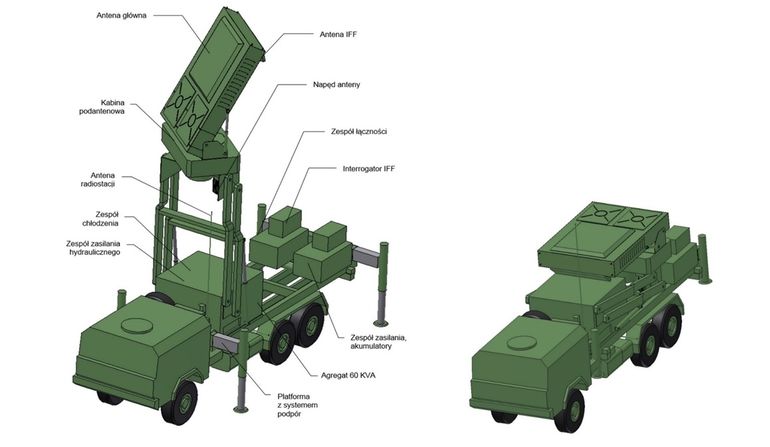
The simulations carried out confirmed the fact that such system would be capable of tracking the ballistic missiles, however, additional information from the initial detection radars would be required to realize the above.
The developed scenarios show that the Wisła radar prototype, operating within the S bandwidth, could be developed in 5 years. Analogous prototype operating within the X bandwidth could be created in 10 years. When it comes to the X-band radar, the period could be shortened (cut down to 5 years), once cooperation with a foreign partner is established (e.g. the French – using the transmit-receiving modules that utilize the GaN technology). This model cooperation assumes that the first examples of the AESA antennas would be developed by the Thales company, and subsequently a knowledge of the production process would be transferred to Poland.
In case of the NAREW radar, a concept of AESA C-band radar has been developed, with the expected range of 90-150 kilometres. This radar is also going to utilize an active antenna with digitally formed signal beams in both planes, along with a horizontal antenna rotation system.
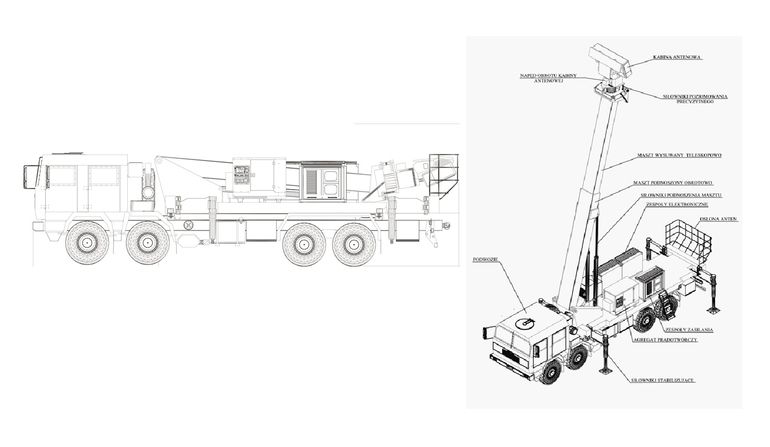
The antenna is to be smaller than in case of the WISŁA radar, thus there would be an option of setting it at a higher position – it may be utilized to detect the targets at low altitudes.
Gallium Nitride
The proponents of the Patriot POL system indicate the fact that the AESA antennas based on Gallium Nitride transmit-receiving modules have a lot of advantages. The GaN technology is to be utilized in the radars that are offered for the Polish customer. These antennas have a significant advantage over the gallium arsenide systems, used e.g. in the MEADS radar.
Above all, such modules are characterized with a significantly higher level of reliability. Secondly, they may be air-cooled. The latter property stems from the characteristics of the gallium nitride, which is a far better semi-conductor than its arsenide counterpart. It has better thermal transmittance properties, it is also resistant to high temperatures – this means that the radar cooling system would be simplified. What is more, utilizing the gallium nitride antenna would reduce the damage rate and would make it possible to use higher power ratings.
Of course ready-made elements based on the gallium nitride technology are easily available, however it would be more cost-effective once such elements are manufactured locally. Such offer was already submitted by the French, namely the Thales company which is willing to use the GaN technology in the Ground Smarter GS1000 radar. Now we have to persuade the Rayethon company to place a similar offer.
This would be particularly beneficial due to the fact that the Polish companies would not work on the new R&D programme from a scratch. At the moment two programmes in applied research, co-funded by the National Centre for Research and Development, are being realized:
- “Microwave AlGaN/GaN HEMT Transistor – C and X bands”– a research grant, the concept is based on GaN-on-SiC base, coming from foreign suppliers and is realized by the Wrocław University of Technology, Faculty of Electronics, Micro-systems and Photonics (the project is to be completed on 31st October 2015; financing: PLN 2 358 340 );
- “Microwave HEMT AlGaN/GaN transistors on a micro-crystal GaN base” (Pol-HEMT) – the project is realized by a consortium consisting of the following subjects: Institute of Electron Technology, Institute of High Pressure Physics, Polish Academy of Sciences, Institute of Physics of the Polish Academy of Sciences, Warsaw University of Technology, Ammonoo SA and TopGaN Sp. z o.o. The goal is to create a technology demonstrator for a transistor with a power of 10W at 4 GHz. (the project is to be completed on 31st October 2015,, the grant was provided in an amount of PLN 7 434 569).
What’s next for Wisła?
The Raytheon company is willing to show its will of cooperating with the Polish industry and it has signed a lot of letters of intent with the scientific institutions and some facilities in Poland, including the PIT-Radwar S.A. company. Now is the time to negotiate the scope of cooperation – but not at the “company-company” level. The negotiation procedure is to be intergovernmental
So far, the US authorities authorized only purchase of the Patriot missile radars with the GaN techology, however, the initial memorandum signed with the Rayethon company does not mention the technology transfer pertaining the transfer of the knowledge needed to create radar systems based on the Gallium Nitride arrays. Now, the negotiators need to persuade the US government to transfer the above-mentioned technology, achieving the conditions that would be similar to those offered by the Rayethon’s competition within the scope of the Wisła tender.
The professionals working within the field note that this could even be connected with creation of a new facility that would manufacture the transmit-receiving modules that would be operable within a wide range of bandwidths (X, C, S, L and VHF). Not only would new jobs be created in Poland, we would also become a European leader (or even a global leader) working within the field of such components. The gallium-nitride elements manufactured in Poland could be utilized by all classes of radars: land-based, airborne, and maritime ones. One should remember that we mean even 10 000 modules within a single phased-array antenna.
The initial business plan shows that creating an experimental facility for small-scale production would take two years, while creating a target plant which would carry out mass production could be realized in a period of 5 years. It is estimated that the cost related to both these stages would not exceed PLN 320 million. However, such investment would have a very high level of ROI. Secondly, the government needs to be willing to execute such investment. Not to mention the fact that Poland continues to be dependent within the field of deliveries of the radar equipment – the field within which the Polish companies have already gathered more than 60 years of experience.


